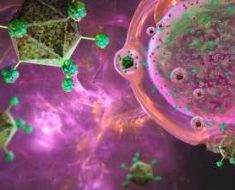 Reviewed
ReviewedBrain activity measured in living tissue using diamond sensors
 Reviewed
Reviewed
A recent study by European scientists shows that highly sensitive sensors based on color centers in a diamond can be used to record electrical activity from neurons in living brain tissue.
Before people encounter symptoms of brain diseases such as dementia, slight changes have usually already occurred in the brain tissue. It may be that parts of the brain are swelling up or clumps of proteins are forming. These small changes might influence how nerve cells in the brain signal each other and communicate and how information is processed and memorized.
Medical scientists want to study these minor changes that occur in the very early stages of a disease. That way, the intention is to learn more about the causes of the disease to provide new insights and more efficient treatments. Today, microscopic studies on the brain are performed with one of two strategies: Optical inspection of brain tissue samples from animals or deceased patients that suffer from the studied disease or measurements of the signals from the nerve cells using wires, colouring, or light.
These methods, however, have some limitations: They may damage the tissue or change the signals. Also, they may work differently depending on what tissue you are studying; signals from some parts of the nerve cells involved in a particular disease may be hard to measure.
Measuring the field, not the sample
Scientists from DTU, the University of Copenhagen, Copenhagen University Hospital, Université Sorbonne, and Leipzig University have found a way to measure the signals from brain tissue without touching or inserting needle probes into it. They do so by measuring weak magnetic fields produced by the nerve cells when communicating. In doing so, they made use of the fact that the magnetic field travels through the tissue unchanged.
Overall, the idea is that sensing the magnetic field ultimately is non-invasive. You do not need to insert electrodes or probes or stain the tissue you want to analyze. Because one picks up the induced magnetic field, one obtains information about the activity without inserting a physical sensor into the system or otherwise modifying it."
Alexander Huck, Associate Professor at DTU Physics
Alexander Huck was supervising the project and is co-author of the study.
It is nothing fundamentally new to measure magnetic fields induced in the human body, but it usually requires special equipment that is bulky and needs cryogenic cooling. As such, traditional methods are not suitable for measuring small, living tissue samples, let alone tissue from the human brain.
In this project, the team of scientists is taking advantage of tiny, deliberate flaws in synthetic diamond crystals. These flaws are called colour centres or, technically, nitrogen-vacancy centres/NV centres. The term NV-centres derives from the fact that in the diamond, one carbon atom is replaced with a nitrogen atom and sits next to a vacancy, i.e., where no atom is present. This causes the centres to allow light absorption and – upon releasing energy – light emission.
"These NV colour centres also have an effective unpaired electron with a spin, and if there is a magnetic field, the spin of the electron oscillates around that field. So, if the magnetic field increases or decreases, it will oscillate a bit faster or a bit slower, and we can measure these changes via the light emission of the NV colour centres," explains Alexander Huck.
Still at an early stage
The experimental setup is as follows: In a centimetre scale chamber, a slice of brain tissue is placed on insulating layers of aluminium foil. The diamond is set in a hole at the bottom of the chamber, below the insulating layers. A green laser and a microwave antenna are then aimed at the colour centre of the diamond, and the light emission from the diamond is recorded. When the scientists stimulate the neurons in the tissue to fire simultaneously, they can measure changes in the brightness of light emission from the colour centres.
Crucially, the laser light and the microwaves never reach the brain tissue – not an actual human brain in this case, but tissue from the brain of a mouse – the changes in the magnetic field are simply tracked using the NV colour centres.
"When the neurons in the brain tissue sample fire, that will induce a magnetic field that then changes the light emission and the brightness of the diamond, which we record as an optical signal," says Alexander Huck.
In their experiments, the scientists can distinguish signals from different types of nerve cells. They checked their measurements using a proven technique that touched the tissue and measured the electricity directly. They also show how they can artificially change the neuron activity in the tissue by using a drug that blocks specific channels in the nerve cells.
"Eventually, the idea is that when you have a patient, where you suspect some kind of neurodegenerative disease, you may use methods derived from our experiments to diagnose the precise condition," concludes Alexander Huck. He stresses, however, that a lot of work is still needed for that to be the case:
"If we compare our technique to other methods in use today, which have been around for decades, they are still better than what we can do now. We are at an early stage, and much more work has to be done before this technique can be transferred and applied in a clinical environment. Research in NV centres and exploring their most suitable application areas is still at an early stage—this is a nascent field."
DTU (Technical University of Denmark)
Hansen, N. W., et al. (2023). Microscopic-scale magnetic recording of brain neuronal electrical activity using a diamond quantum sensor. Scientific Reports. doi.org/10.1038/s41598-023-39539-y.
Posted in: Device / Technology News | Medical Science News
Tags: Brain, Dementia, Electron, Hospital, Magnetic Field, Medicine, Nerve, Neurodegenerative Disease, Neurology, Neuron, Neurons, Neuroscience, Research, Technology





